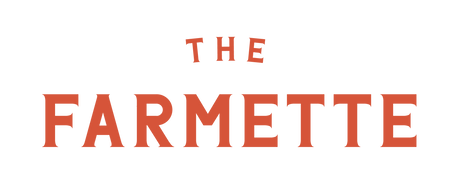
Easy Ways to Reduce Food Waste
How many times have we been chastised by our nani, dadi or mom for leaving food in our plates or to take only as much as we can eat? Our elders try to ingrain in us to not only be responsible for our food choices but also because of the need to invoke the importance of being fed, for generations to come.
Around the world, 690 million people regularly go to bed hungry, according to a report from the United Nations food agencies. And did you even know that 43 percent of Pakistan’s entire population is food insecure (World Food Programme Report 2020)?
With such huge number of populations facing issues of food shortage, malnutrition, etc. across the world, let us tell you about some disturbing food wastage trends:
- Over 1/3 of all food produced globally goes to waste.
- The annual value of food wasted globally is $1 trillion, and it weighs 1.3 billion tonnes.
- 25% of the world’s fresh water supply is used to grow food that is never eaten.
- 28% of the world's agricultural area is used to produce food that is ultimately lost or wasted each year.
Reducing food waste is the #1 solution to the climate crisis, according to Project DrawDown – coming above electric cars, solar power and plant-based diets.
Consumer habits are a major contributor towards food waste occurs every day as people buy more than they can eat. Case in point being, all-you-can-eat buffets and buy-one-get-one deals encourage people to buy more than they can eat. A huge quantity also goes to waste catering for wedding events and other functions where people recklessly fill heaps of food in plates and are unable to eat all of it.
Food waste occurs all along the supply chain- produce is also lost after harvest, in handling, storage, processing and transport. In fact, some food is lost even before the crops leave the farm! Farmers may overplant factoring in possibility of adverse weather conditions which may result in surplus production, retailer’s high aesthetic standards and limitations in harvesting technology all count towards the food loss at the farm itself. Poor infrastructure, equipment limitations or insufficient cold storage are other causes for damaged produce eventually resulting in food wastage.
Here are some steps that can be taken to reduce food waste and to promote better living standards in our country.
On an Individual Level:
- Change your attitude- shop smart! Make a list of items that you need instead of going after deals and buying unnecessary products.
- Use older food that is still good to make other products. There is nothing more crispier that using crumbs from stale bread to coat your chicken or fish when frying!
- Cut and freeze vegetables and fruits so that they can be consumed for a longer period.
- Collect food leftovers and distribute them to the hungry in your neighborhood.
- Volunteer in food rescue groups, such as Robin Hood Army [Add link], Thali [Add link]and Rizq [add link] in Pakistan to help the needy.
- You can recycle food by composting old fruits and vegetables. This would save you from buying compost but will also give you better quality plants in your garden.
As A Business:
Track the food wastage
The amount of food wasted in the operations of your business can be tracked and measured daily, weekly or monthly. Employees should be kept accountable for this wastage of food by having them report any wasted item on the food waste list you make. The type of food that is wasted would allow you to think of creative solutions to repurpose them in other dishes and alternatives to stop the wastage.
Packaging Consideration
Packaging is an essential part of the supply chain. The appropriateness of packaging choice to the type of food being transported and the conditions relating to its perishability is so important. For example, cucumbers lose their moisture if kept unwrapped and potatoes don’t stay crunchy if not packed properly.
Intelligent packing is also necessary to convey the information of the products to the retailer and the consumer. So that they can use FIFO (First In First Out) method to sell the products. Extra produce or short shelf-life products can be canned to increase their consumable period.
Cutting Costs is not Always the Best Solution
Most businesses rely on cutting costs to increase revenues. This just might not work in the food business. Consumers nowadays are making informed lifestyle choices and are willing to pay more for better quality, organic produce. If the food business invests in quality delivery, they are able to differentiate from the competition and have shorter shelf life of products as they provide fresh goods swiftly.
Stock Management
Always stock on the basis of consumer demand and storage facility. Having efficient communication throughout the supply chain is imperative for this so that the ordering system is managed effectively and any problems in the transport process can be tracked. Additionally, Labelling the items in the stock according to their “best before” and “sell by” dates will also improve organization and in implementing inventory management techniques such as FIFO.
Surplus food
When there is surplus in your food business or leftovers that have shorter life, distribute these portions to the unfed and less fortunate in the city. Social responsibility can benefit your business in unimaginable ways – to grow and build itself as well as improve the community around it!

Leave a comment